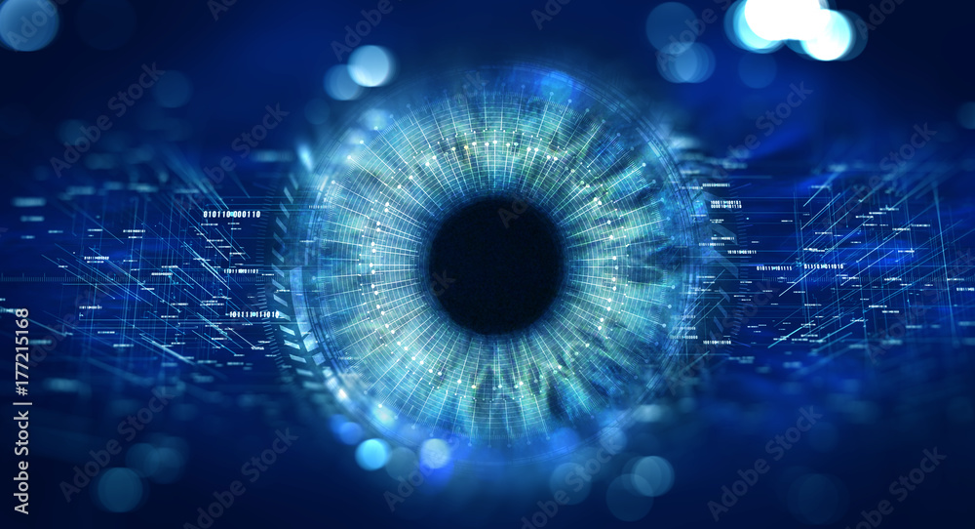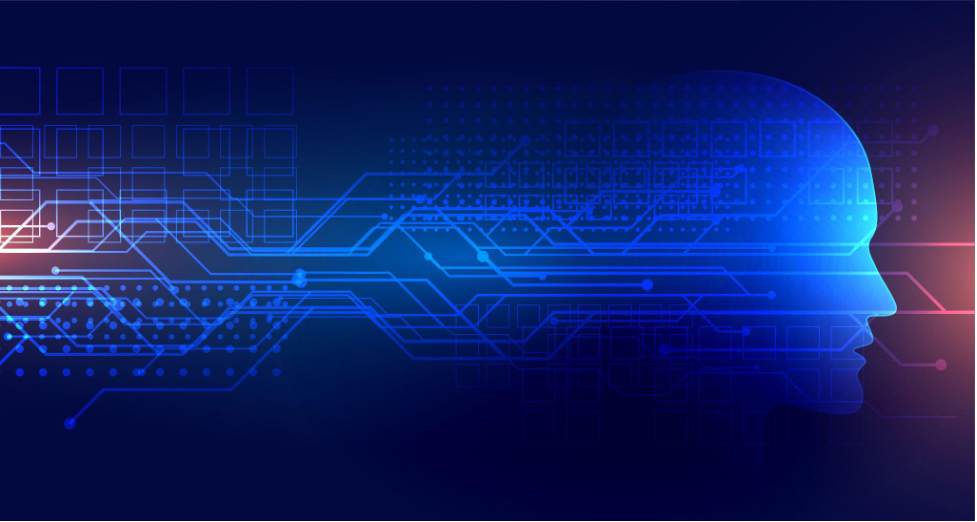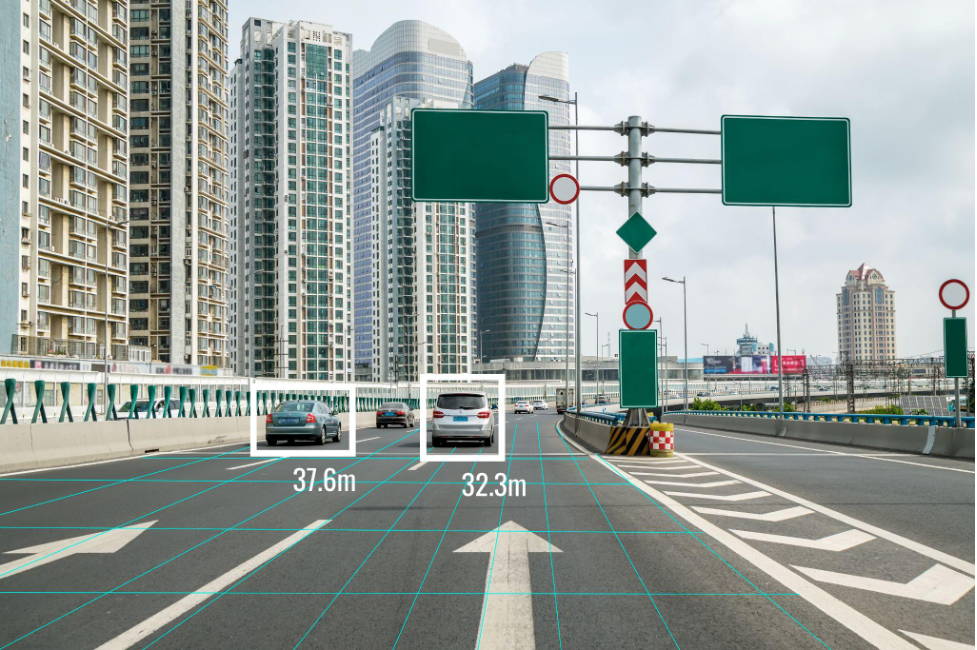One of the most compelling fields of artificial intelligence (AI) is computer vision (CV), which enables computers and devices to deduce meaningful information from digital images.
On the other hand, deep learning is an area of machine learning concerned with artificial neural networks, that is, algorithms inspired by the structure and function of the brain.
In this article, we explore deep learning and computer vision in detail to present what these concepts are and how companies can benefit from them.
In this article:
What Is Computer Vision?

Computer vision is a type of AI that uses several layers of algorithms in the form of artificial neural networks, enabling systems and computers to gather and interpret information from visual inputs, such as images or videos. Based on this information, computers can take action or even make recommendations to the user. Thanks to computer vision, devices are increasingly becoming able to see and observe and understand visual inputs.
Computer vision is very similar to human vision, only superior. Systems equipped with this type of AI can inspect and analyze thousands of products or processes in a matter of minutes, unlike the human brain.
How Does Computer Vision Work?
Almost every AI vision algorithm is based on pattern recognition. Experts train machines to process lots of visual data, such as thousands of related digital images. Then, convolutional neural networks piece together visual images like a jigsaw puzzle.
In a nutshell, computers are trained to recognize image fragments and name items on them. To process those images, they start to look for patterns in the objects. In the end, this advanced technology assembles numerous image components like a puzzle.
Computer vision is becoming increasingly popular, and companies in all industries, ranging from energy to automotive, are using it to improve their process.
Keep reading to find out how computer vision is used in different companies and industries.
Computer Vision AI Examples in the Real World
There are numerous use cases of computer vision AI in many industries, and we collected the most popular ones.
- Automotive industry. Computer vision is applied in the automotive industry for the development of autonomous vehicles. For example, with the help of this technology, Tesla was able to design cars with cameras that ensure advanced driver assistance systems and even autopilot.
- Public security. The most common examples of CV are facial detection and recognition, and the public security sector utilizes these technologies the most. Thanks to AI recognition, now it is possible to detect and prevent crime by using criminal tracking devices.
- Retail. Retail apps have started relying on CV, especially after the outbreak of the global pandemic. Retail stores can use computer vision technologies to keep track of customer activity. AI is used to identify dissatisfied shoppers or greet regular customers. Companies such as Amazon are developing visual search technology that will give users the ability to search by picture.
- Medicine. AI is gradually revolutionizing the field of medicine thanks to image classification and pattern detection. CV technology is utilized to develop medical software that helps doctors diagnose dangerous conditions more easily. Microsoft started the InnerEye project to make AI and medical image analysis available for all medical institutions.
- Education. Computer vision is also applied in the EdTech industry. The technology is meant to help teachers assess the overall learning process more easily. For example, with CV, teachers can monitor students and detect those who are disengaged or attempting to cheat during an exam.
- Fitness and sports. Technology can be used to take training and recreational activities to the next level. For example, machine learning is used to develop tracking software meant to detect and process a sports team, player positions, and their movement to improve team performance.
- Precision agriculture. AI technologies meant to add boosted productivity to agro and farming are increasingly on the rise. Agriculture companies use computer vision technology for planting and harvesting but also weather analysis, plant health detection, automatic pesticide spraying, and even crop field security.
- Gaming. Consoles such as Microsoft Kinect employ computer and AI vision to monitor human pose estimation. This system estimates a person’s posture and position and can be used in various fields, including physical therapy and fitness apps.
- Media and entertainment. Thanks to CV, companies developed smart eyewear and controllers that can enhance a viewer’s experience. Even though it didn’t become too popular, Google Glass is an excellent example of computer vision used in the media and entertainment industry.
- Manufacturing. Technology is present at virtually all stages of the manufacturing process. Now, companies have started using AI to assist in packaging as well as the monitoring of product quality. Computer vision can also be used to perform automated product assembly. For example, Tesla is one of the first companies to rely on automated manufacturing processes.
- Transportation. Machine learning, AI, and computer vision have also transformed traffic and transportation. For example, some systems detect traffic signal violations and help law enforcement reduce unsafe driving. Also, this technology can be used to monitor and analyze traffic flow.
Now that we’ve explained what CV is and how various industries can utilize it, let’s explore how deep learning in computer vision works.
What Is Deep Learning?

Deep learning is a branch of machine learning and AI that uses artificial neural networks to imitate the functioning of the human brain. The main aim of deep learning is to allow computers and systems to learn from vast amounts of data and filter all that information just like a human brain would.
Many artificial intelligence (AI) apps and services rely on deep learning to boost automation by executing analytical and physical activities without human interaction. Deep learning technology is at the heart of common products and services (such as digital assistants, voice-enabled TV remotes, and credit card fraud detection) and upcoming technologies (such as self-driving cars).
Deep Learning vs. Machine Learning
Deep learning is described as a branch or a subset of machine learning. But, what does this mean?
The simplest explanation is that the difference between deep and machine learning lies in the type of data analyzed and the methods used by computers and systems to learn.
To create predictions, machine learning algorithms use structured, labeled data, which means that certain features are defined from the model's input data and grouped into tables. This does not necessarily imply that machine learning does not employ unstructured data. Rather, if it does, it usually goes through some pre-processing to put it into a structured format.
Deep learning eliminates some of the data pre-processing usually associated with machine learning. These algorithms can ingest and interpret unstructured data such as text and images and automate feature extraction, reducing the reliance on human specialists.
After knowing the basics of deep learning, you may ask in which niches and industries it is used.
Practical Examples of Deep Learning
The following are the most widespread practical applications of deep learning.
- Virtual assistants. All virtual assistants, including Cortana, Siri, and Alexa, rely on deep learning to understand human speech and the language used to interact with them.
- Automatic translations. Numerous translation tools use deep learning algorithms to automatically translate words, phrases, and even sentences from one language to another. This technological advancement turned out to be incredibly helpful for business people, travelers, and even those who work for the government.
- Driverless delivery trucks and autonomous cars. How can autonomous vehicles drive around, perfectly understanding the road conditions and how to respond to them? Thanks to deep learning algorithms! The more algorithms are exposed to data, the better they will become at information processing and responding to circumstances, such as recognizing a stop sign even when it is covered with snow.
- Chatbots and service bots. Chatbots and service bots used in customer service have become advanced to the extent that they can respond to customers intelligently and helpfully. Without deep learning, this wouldn’t have been possible.
- Image colorization. Back in the day, transforming a black-and-white photo into a color photo could only be done by a human hand. Today, it is possible to use deep learning and recreate the black-and-white image in color by using the context and objects present in the photos.
- Facial recognition. This technology is not only used for security purposes but also for other tasks such as tagging people on Facebook. It relies on deep learning.
- Medicine and pharmaceuticals. Deep learning in the medical industry attracts the interest of many of the world's leading pharmaceutical and medical corporations, with applications ranging from disease and tumor diagnosis to personalized drugs tailored to an individual's DNA.
- Shopping and entertainment. How can Netflix know which show you would enjoy watching? How does Amazon make recommendations for your next purchase? Well, because they use deep learning algorithms, of course!
Now that you know the basics, let’s explore how deep learning for computer vision works!
Using Deep Learning in Computer Vision

Deep learning is gaining momentum in computer vision. This is because many computer vision tasks can be solved using deep learning neural networks. In this section, we explore several computer vision tasks where deep learning methods are used to make greater progress.
In Image Classification
Image classification refers to the process of assigning a label to an image or photograph, such as:
detecting cancer possibility on an x-ray;
classification of a handwritten digit;
person detection by the face on a picture.
In Image Classification with Localization
This task entails giving a class label to an image and displaying the location of an object in the image using a bounding box (drawing a box around the object).
In Object Segmentation
Object segmentation is the process of drawing a line around each detected object in a picture.
In Image Style Transfer
The task of learning style from one or more images and applying that style to a new image is known as style transfer or neural style transfer.
In Image Colorization
Image colorization, also known as neural colorization, turns a grayscale image into a full-color image.
In Image Reconstruction
The task of filling in missing or corrupt areas of an image is known as image reconstruction and image inpainting.
In Image Super-Resolution
The task of creating a new version of an image with a better resolution and detail than the original image is known as image super-resolution.
In Image Synthesis
Image synthesis is the process of creating specific alterations to existing images or wholly new images.
With this list, we’ve covered the most common tasks. But, of course, there are many other applications of deep learning for computer vision. You can learn them with the help of specialized services like those offered by Geniusee. Their team can help you understand all the necessary information about deep learning and also create your own deep learning application.
The Promise of Deep Learning for Computer Vision

Deep learning approaches are popular for one reason only—they deliver on their promises. In this section, we'll look at five specific promises of deep learning approaches in computer vision.
The promise of automatic feature extraction. Complex and relevant features can be learned automatically from vast image databases.
The promise of end-to-end models. Pipelines of specialized models can be replaced with single end-to-end models.
The promise of model reuse. Learned features, and even complete models, can be reused in other tasks.
The promise of superior performance. When it comes to solving difficult problems, deep learning techniques outperform traditional methods.
The promise of a general method. A single deep learning approach or method can be used on a variety of related tasks.
Conclusion
Computer vision is a branch of artificial intelligence that teaches computers how to grasp the digital data contained in photos or movies and make sense of it. Deep learning tries to bring machine learning closer to one of its original goals, artificial intelligence.
In this article, we’ve covered the essentials of deep learning for computer vision—what it is, how it can be applied, and how companies in various industries can use it to their advantage.
If you want to create your own deep learning application and do not know where to start, try the services offered by Geniusee.





















